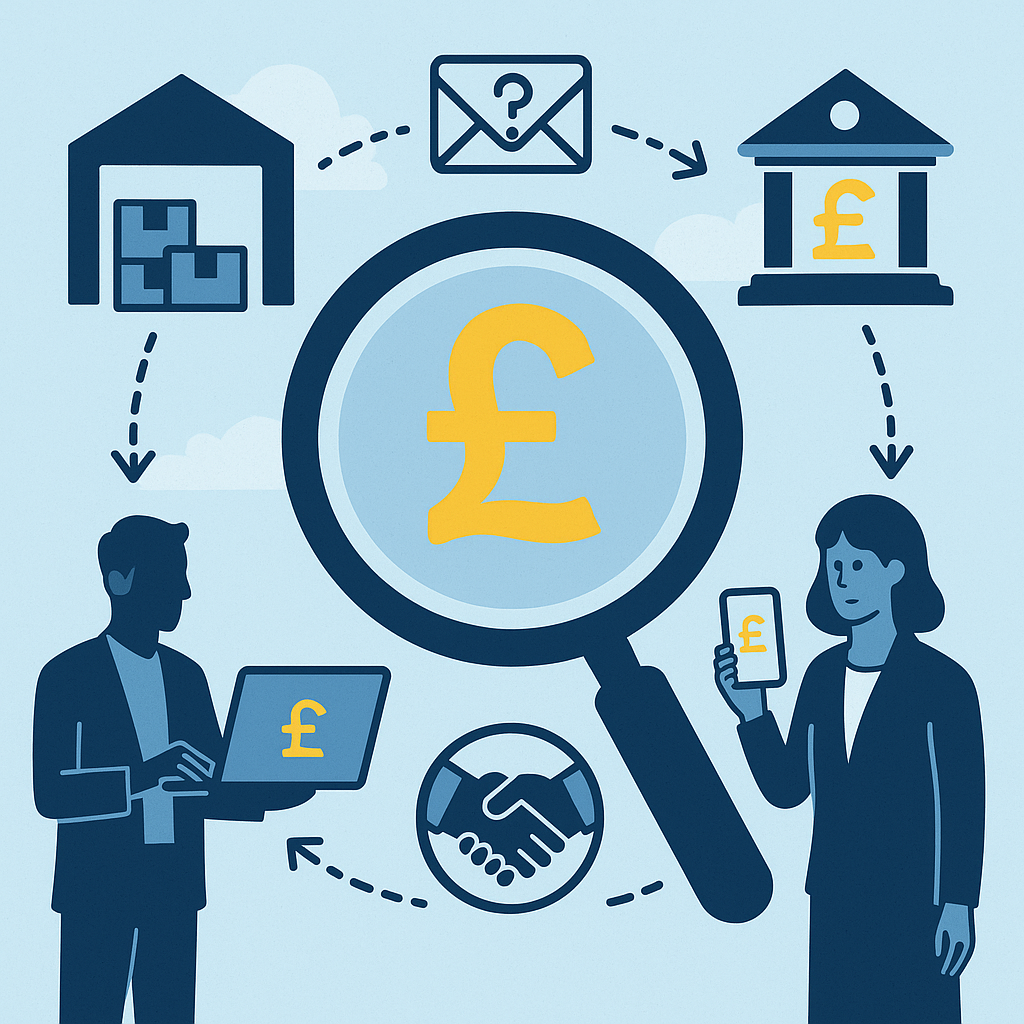Do You Know Who You're Paying — and Who's Paying You?
In the pharmaceutical industry, we talk a lot about supplier qualification, logistics security, and GDP compliance — but we should also ask: Do you actually know who is paying you? And who you are paying?
In today’s complex web of wholesalers, brokers, procurement agents, and parallel importers, financial transparency is no longer guaranteed. If you don't understand the full financial journey of your products, you may unknowingly open your business to commercial risk, regulatory breaches, or even criminal exposure.
💷 Why Financial Transparency Matters
While medicines flow one way, money often flows another — and sometimes through unexpected intermediaries.
It’s becoming more common to encounter:
Orders placed by one company, paid by another
Suppliers invoicing on behalf of "sister" or "parent" companies
Stock movements that don’t match the original payer or recipient
Delayed or missing payment confirmations with unclear responsibilities
This isn’t just a billing issue — it’s a GDP and accountability concern.
MHRA have stated that they are going to start following fiscal flows as part of the GDP inspection scope.
If the party you're selling to isn't the one paying, or if the one you're paying isn’t the one supplying, who holds responsibility in the event of diversion, recall, or falsified medicines?
🧭 Traceability Isn’t Just for Stock — It’s for Cash Flow Too
Under GDP, full traceability applies not only to medicinal products — but also to transactional records, contractual clarity, and partner verification.
Without a clear view of who’s involved financially, you may be:
Extending credit to unknown entities
Paying unverified companies, possibly without GDP credentials
In breach of your own SOPs around supplier/customer approval
At risk of fraudulent or diverted activity, especially with high-value, in demand or controlled drugs
For guidance on interpreting financial arrangements under MHRA regulations, you can always refer to the MHRA website.
🛡️ Best Practices to Strengthen Financial Oversight
✅ Validate who you are paying — Ensure the payment recipient matches the licensed supplier. Check bank details against your audit records.
✅ Know who's paying you — Is the paying company the one you’ve qualified and agreed terms with? If not, why?
✅ Screen for complex funding chains — Be cautious of “introducers,” “marketing partners,” or “invoice processors” who lack visibility in GDP approvals.
✅ Monitor high-risk orders — Unusual volumes, spikes in high-value or CD products, or payment through third parties should all raise internal flags.
✅ Audit your finance and commercial SOPs — Make sure they align with GDP principles, not just procurement convenience.
🧩 Ask Yourself:
Are all our commercial partners fully qualified — both on the supplier and customer side?
Can we confidently trace every payment and receipt back to an approved/qualified legal entity?
Are any third parties involved in invoicing or payments that we haven’t assessed?
Are we aware of who is ultimately funding or receiving the goods?
If there’s any uncertainty — even in a handful of cases — now is the time to review.
📢 Final Thoughts
In a regulated industry, financial ambiguity can become a regulatory liability. And in a world of increasingly creative trading arrangements, not asking the right questions can cost you dearly.
Because in the end — if something goes wrong, it’s not just about who supplied the stock — it’s about who was behind the transaction.
📞 Need Help Reviewing Your Supply Chain?
Whether you need help verifying your trading partners or just bringing clarity to complex supply arrangements, we’re here to support you.

